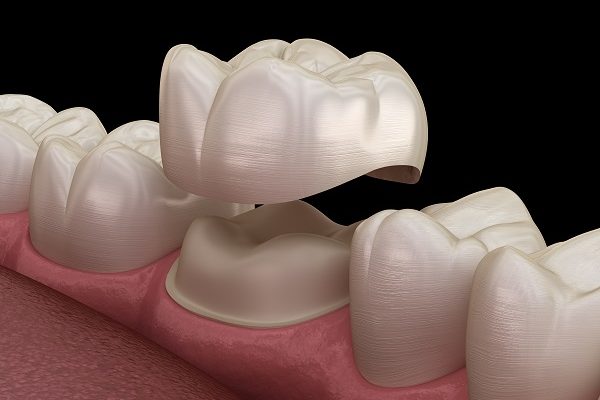Introduction
Dental laboratories are an essential component of the dental industry. They are responsible for creating customized prosthetics, such as dentures, crowns, and bridges, that improve the appearance and function of a patient’s teeth. Over time, the methods used in dental laboratories have evolved significantly.
This blog post will discuss the development of dental laboratories from handmade dentures to digital dentistry.
Traditional Dental Laboratories
Traditional dental laboratories have been around for centuries. In the past, dentures and other prosthetics were made entirely by hand, requiring a great deal of skill and artistry. Dental technicians were responsible for creating these prosthetics, and they spent countless hours perfecting their craft. However, traditional methods were not without their limitations. The process was time-consuming, and the results were often imperfect.
Dental labs NYC, for example, have been using traditional techniques for decades. These labs have highly skilled technicians who have mastered the art of handcrafting prosthetics. However, as technology began to advance, traditional methods were gradually replaced by more advanced techniques.
Introduction of Digital Dentistry
Digital dentistry refers to the use of advanced digital technologies in dentistry, such as digital scanning, computer-aided design (CAD), and computer-aided manufacturing (CAM). These technologies have revolutionized the dental industry by allowing for more accurate, efficient, and cost-effective dental treatments.
One of the most significant advancements in digital dentistry is the introduction of digital impressions. Traditionally, dentists would take impressions of a patient’s teeth using a putty-like material. This process could be uncomfortable for the patient, and the impressions were often imperfect. Digital impressions, on the other hand, use an intraoral scanner to create a digital model of a patient’s teeth. This process is more comfortable for the patient and produces more accurate results.
Another advancement in digital dentistry is 3D printing. With 3D printing, dental technicians can create prosthetics, such as crowns and bridges, using digital scans of a patient’s teeth. This process is faster and more accurate than traditional methods, which required the use of molds and multiple visits to the dentist.
Digital dentistry also allows for greater customization of dental treatments. With digital scanning and design software, dental technicians can create prosthetics that are tailored to each patient’s individual needs. This results in better outcomes and higher patient satisfaction rates.
Overall, the introduction of digital dentistry has transformed the dental industry, allowing for more accurate, efficient, and personalized treatments. Dental labs NYC and dental crown labs near me have embraced these advancements to provide their patients with the best possible dental care.
Modern Dental Laboratories
Today, modern dental laboratories combine traditional and digital methods to create high-quality prosthetics. CAD/CAM technology, for example, allows dental technicians to design and create prosthetics with greater precision and efficiency. Digital smile design is another advancement that has transformed the industry. With this technology, dental technicians can create a digital mock-up of a patient’s teeth, allowing them to see what their new smile will look like before any work is done.
The advantages of modern dental laboratories are clear. The combination of traditional and digital methods has led to more accurate and aesthetically pleasing prosthetics. Patients can now receive treatments that are customized to their individual needs, resulting in better outcomes and higher patient satisfaction rates.
Future of Dental Laboratories
The future of dental laboratories looks bright. With the advancement in technology, we can expect to witness even more personalized treatments. Artificial intelligence, for example, may soon be used to assist dental technicians in creating prosthetics that are tailored to each patient’s unique needs. Emerging trends in dental laboratories, such as the use of biomaterials and nanotechnology, may also lead to new and innovative treatments.
Personalized treatments will become even more prevalent in the future. With the use of digital scanning and design software, dental technicians can create prosthetics that are tailored to each patient’s individual needs. This will result in better outcomes and higher patient satisfaction rates.
Artificial intelligence is another technology that will play a significant role in the future of dental laboratories. With AI, dental technicians can analyze data and make predictions about the best treatment options for each patient. This will lead to more accurate diagnoses and more effective treatments.
Emerging trends in dental laboratories, such as the use of biomaterials and nanotechnology, are also worth noting. These new technologies will allow dental technicians to create prosthetics that are stronger, more durable, and more natural-looking than ever before.
Conclusion
In conclusion, dental laboratories have come a long way since the days of handcrafted dentures. Today, modern dental laboratories use a combination of traditional and digital methods to create prosthetics that are more accurate, aesthetically pleasing, and durable. With the advancement in technology, we can expect to witness even more personalized treatments, better outcomes, and higher patient satisfaction rates. Dental labs in NYC and dental crown labs near me are embracing these advancements to provide patients with the best possible dental care. It is clear that dental laboratories will continue to play a vital role in the dental industry for years to come.




